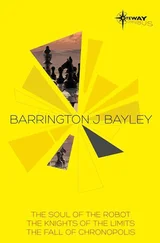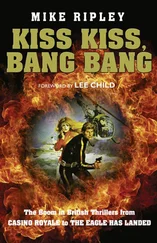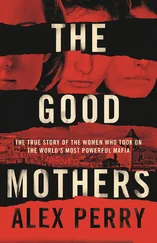Rahel Rivera Godoy-Benesch - The Production of Lateness
Здесь есть возможность читать онлайн «Rahel Rivera Godoy-Benesch - The Production of Lateness» — ознакомительный отрывок электронной книги совершенно бесплатно, а после прочтения отрывка купить полную версию. В некоторых случаях можно слушать аудио, скачать через торрент в формате fb2 и присутствует краткое содержание. Жанр: unrecognised, на английском языке. Описание произведения, (предисловие) а так же отзывы посетителей доступны на портале библиотеки ЛибКат.
- Название:The Production of Lateness
- Автор:
- Жанр:
- Год:неизвестен
- ISBN:нет данных
- Рейтинг книги:5 / 5. Голосов: 1
-
Избранное:Добавить в избранное
- Отзывы:
-
Ваша оценка:
- 100
- 1
- 2
- 3
- 4
- 5
The Production of Lateness: краткое содержание, описание и аннотация
Предлагаем к чтению аннотацию, описание, краткое содержание или предисловие (зависит от того, что написал сам автор книги «The Production of Lateness»). Если вы не нашли необходимую информацию о книге — напишите в комментариях, мы постараемся отыскать её.
The Production of Lateness — читать онлайн ознакомительный отрывок
Ниже представлен текст книги, разбитый по страницам. Система сохранения места последней прочитанной страницы, позволяет с удобством читать онлайн бесплатно книгу «The Production of Lateness», без необходимости каждый раз заново искать на чём Вы остановились. Поставьте закладку, и сможете в любой момент перейти на страницу, на которой закончили чтение.
Интервал:
Закладка:
In 2016, Oxford University Press published a collection of essays titled Late Style and Its Discontents , which outlines the different ways in which late-style concepts in music theorymusic, art historyart history, and literary criticism have arrived at a point of paralysis. The term ‘late art’ is often used as a label but critics carry out little further investigation into the connections between old age and creativity (McMullan and Smiles, Introduction 1–2). Much of the fascination with late works, especially in literary studies, is connected to the idea that these are believed to
constitute […] the artist’s final vision, a meditation on the creative act and on human achievementachievement that frequently offers a glimpse of future developments. In short, late style is presumed to demand our attention […] because a great artist’s final statements disclose profound truthstruth. (2)
Within this definition, the term ‘late style’ is freed from its old-age factor: indeed, an artist who dies at a relatively young age may create a masterpiece that is subsequently received as his/her final, weighty statement – provided that its creator is considered “a major creative voice” (3).2 The term ‘old-age styleold-age style,’ in turn, which takes the artist’s advanced age as a condition for the work’s production, applies to stylistic changes produced in an artist’s old age independently of the work’s (or the artist’s) canonical status. In other words, whereas ‘late style’ makes a quality judgment, ‘old-age style’ is a qualitatively neutral, analytical category that foregrounds the relationship between the artists’ age and style and presupposes a causal relationship between the two. In practice, however, the two terms often overlap and are used interchangeably (Amigoni and McMullan 378), with ‘late style’ dominating the critical discourse. This is frowned upon by McMullanMcMullan, Gordon and SmilesSmiles, Sam because it “arguably obscures the specific impact of old age on creativitycreativity” (Introduction 6).
Even though one should thus consider the connection between old age and creativity a priority in studying late art, the concept of old-age styleold-age style is more problematic than McMullanMcMullan, Gordon and SmilesSmiles, Sam allow for. If one is to assert that a certain style of a composer, painter, or writer is influenced by his or her old age, one needs to be able to define what old age means. When and why does a person qualify as old? What are the factors that determine old age? A certain number of years lived? Physical frailtyfrailty? Proximity to deathdeath? Numerous investigations suggest that old age is a fuzzy category, “a cultural constructcultural discourse” (Waxman 8), and ideas about what it means have shifted over the centuries. The leading German art historianart history Willibald SauerländerSauerländer, Willibald, for instance, has shown that with the increasing secularization of the Western world, ideas about old age have developed from the concept of a passive phase of waiting for death in expectation of the afterlife (i.e. God’s decision to take one’s life) to the current focus on consumption, entertainment, and active ageing.3 Moreover, as soon as we take the definition beyond chronological old age (i.e. the period of life after sixty, or seventy, depending on life expectancy), we will have to focus on subjective ageing, which is greatly influenced by a person’s individual situation and his/her cultural environment, for instance healthhealth, or, rather, illness and pain (cf. de Medeiros and Black), as well as social and economic circumstances (cf. Twigg and Martin, “Identities”). Regional distinctions, as, for example, rural versus urban life (cf. Edmondson and Scharf) and, more importantly, racerace, classclass and gendergender differences (cf. Calasanti and King) add to the complexity and make it almost impossible to safely determine to what extent and in which ways old age influences a particular artist’s creative production.
From this, it follows that there are only two valid methods to approach old-age style: either there is enough testimony by the artists themselves about what ageing meant or means for them and for their artistic activity,4 or critics will have to rely on general cultural concepts of ageing – with due consideration of time period, region, gendergender, and classclass. The latter method, however, lifts the work of art from the strictly biographical context of its producer, and the study of old-age style turns into a purely abstract, reception-basedreception investigation. Hutcheon and Hutcheon, in critically scrutinizing such approaches, emphasize their artificiality and ideological bias, stating that they are always “a retrospectiveretrospection, critical construct with its own aesthetic and ideological agenda and, most importantly, its own view of both aging and creativity” (“Late style(s)” 3, original italics). In other words, the latter approach diminishes insights into the “specific impact of old age on creativity” that McMullan and Smiles would wish to expand.
With these reservations in mind, and based on further reasons to be outlined below, the term ‘late stylelate style’ rather than ‘old-age styleold-age style’ will here be proposed for investigations into the connection between artists’ old age and their creative production, especially in the study of contemporary literature. The works selected for the discussion of stylistic changes in old age – John Barth’s The Development , Karen Blixen’s “Echoes,” and Joan Didion’s Blue Nights – were all written by ageing authors, and they could thus well carry the label ‘old-age style.’ However, although the texts abound with comments about old age, much of their impact lies in their urgency to make a last and lasting statement on creativity . The writers’ old age is thus relevant not merely as another phase of life, after childhoodchildhood, adolescenceadolescence, and middle agemiddle age have passed, but as the last stage, and therefore the last opportunity to be artistically productive. Within this line of argument, old age – with whatever markers it is culturally and personally endowed, the physical declinedecline and lossloss of social status, or rather, the wealth of a long life and gained wisdomwisdom – remains an important factor, but it cannot fully account for the works’ peculiar latenesslateness. In Shakespeare and the Idea of Late Writing , McMullanMcMullan, Gordon insists on the separation between old-age style and late style because late style, rather than being linked to old age, is “a celebration of a particular liminality – of, that is, the proximity of deathdeath. Late work is, in other words, borderline activity, a creative response to death, a kind of eschatology” that is not exclusive to old age (10). Yet, since old age is by definition always the last phase of life and therefore marked by the proximity to death, one could also argue that old age induces lateness, in the sense that the awareness of their advancing age may cause elderly authors to think about the liminal status of their life and their work. Karen PainterPainter, Karen suggests:
The artist who does not die suddenly has the opportunity, and often feels the compulsion, to concentrate on the implications – the meanings – of lateness. He or she can come to terms with the limits of life and achievementachievement and focus on what still seems most important. (6, original italics)
For many artists, such a stock-taking is marked by a concern about the last impression that their work(s) will leave.
In the texts selected for this study, the feeling of urgency and the desire to make a last and lasting impression as an artist is observable on several levels. Most notably, this desire is expressed explicitly by the artist-protagonists portrayed in each story. In John Barth’sBarth, John The Development , the protagonist George Newett muses that he “would be remembered as a once-conventional and scarcely noticed writer who, in his Late Period, produced the refreshingly original works that belatedly made his name” (89). In Karen Blixen’sBlixen, Karen short story “Echoes,” Pellegrina Leoni, the ageing wanderer and former opera singer, decides to engage in one last act of creativity by turning a talented peasant boy into a professional singer, reflecting that “this last part bestowed upon her [by God] was the greatest of her repertoire and in itself divine. In it she must allow herself no neglectfulness and no rest. Were she to die at the end of the respite granted her it would be but a small matter” (171). She further compares her swan song’s effect to Christ’sChrist resurrection, upon which “the whole world had built up its creed” (170). In Joan Didion’sDidion, Joan autobiographical novel Blue Nights , the author’s desire to make a last statement can be best discerned in her wish to show herself in a direct, immediate way, rejecting her former authorial masksmask. “Let me try again to talk to you directly,” she states (134). And: “The tonetone needs to be direct. I need to talk to you directly, I need to address the subject as it were ” (116, original italics). What the statements from these three texts have in common is their strong concern for the audience. How will the late or last work be receivedreception? What kind of shadow will the creative work cast on its creator? What image of the artist will the general public and the critical community infer from it?
Читать дальшеИнтервал:
Закладка:
Похожие книги на «The Production of Lateness»
Представляем Вашему вниманию похожие книги на «The Production of Lateness» списком для выбора. Мы отобрали схожую по названию и смыслу литературу в надежде предоставить читателям больше вариантов отыскать новые, интересные, ещё непрочитанные произведения.
Обсуждение, отзывы о книге «The Production of Lateness» и просто собственные мнения читателей. Оставьте ваши комментарии, напишите, что Вы думаете о произведении, его смысле или главных героях. Укажите что конкретно понравилось, а что нет, и почему Вы так считаете.












